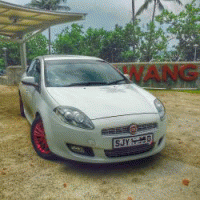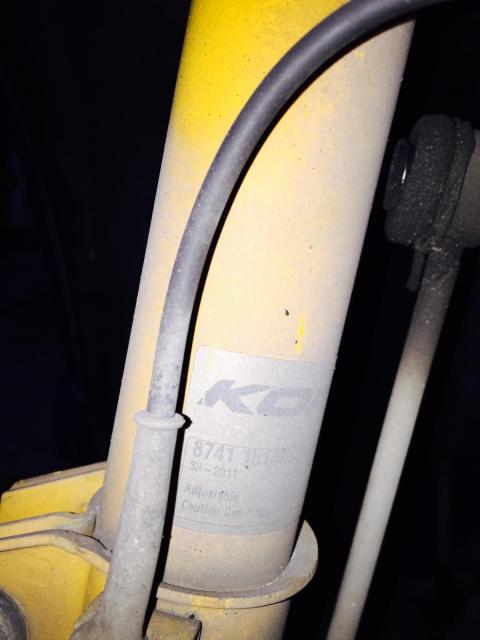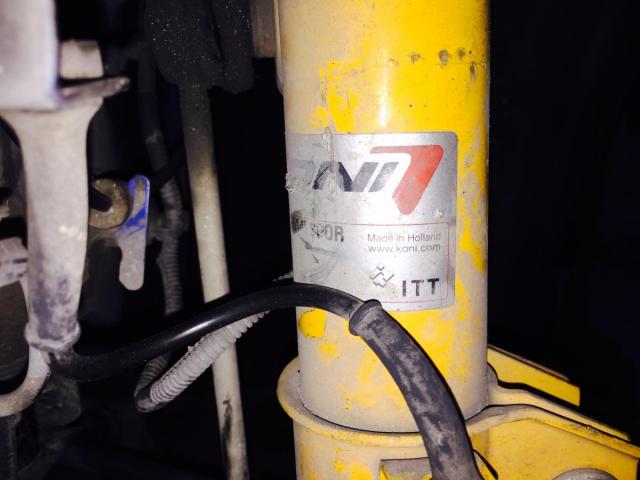Search the Community
Showing results for tags 'shocks'.
-
For those whom like to read and understand more about whats actually the purpose of springs and shocks on your car and what can or cannot be done to it. Springs Springs are primarily responsible for keeping the tire in contact with the road surface over bumps and dips. In the realm of physics, sp...
-
Hi! I took over a Fiat Grande Punto recently and found out that the previous owner had changed the shocks to Koni Sport 8741. Not sure about the springs though.. I find that the ride is a little too stiff and wanted to make it softer. Understand that I'd need a white coloured knob to turn the to...
- 3 replies
-
- koni
- adjustment knob
-
(and 6 more)
Tagged with:
-
A set of 4, how much will it cost?
-
My car(Stream) suspension is starting to give sound and i think the shock is going to wear out given my mileage of 85K now, should about time to change. Any good workshop to recommend? How about Autosaver? Anyone tried their service? Any feedback?
-
Hi, Anyone knows where to get/do Bilstein? Thanx in advance... Jon
-

Didnt know Tokico Shocks are much more affordable
Hondasteam posted a topic in Maintenance & Repairs
My friends driving civic fd 1.8l & Fit GD1 just fixed up Tokico shocks, total cost including labour is only approximately $4xx nia. I was quoted nearly $6xx for KYB shocks early this year for my stream, up from $5xx quoted last year. Total damage is more than $7xx with labour !!! Anyone knows...- 9 replies
-
- honda
- tokico kyb shock js automotiv
-
(and 4 more)
Tagged with:
-
Any Kia Forte owner who has replaced their original shocks? Appreciate yr feedbck on wat's good out there for a firm and good handling... don't like coilover though. Tks!
-
OMG!!! just a bread n butter small hatch back, tracked for fun once and covered only 40,000km in five years but now f shocks gone.... My only "abuse":- sometimes accelerated hard half way going thru road humps but got slowed down a bit before humps. Any bros' shocks lasted shorter?
-
I saw this on my Facebook. The story seems to be getting a lot of attention in cyberspace. It's all about a Moulmein resident's unpleasant encounter with PAP candidate Lui Tuck Yew. Dear Friends I am forwarding you an email I sent to the incumbent MP for Moulmein, Mr Lui Tuck Yew,...
-
Autosaver quoted the labour cost to replace 4 shock absorbers at $150+GST (incl. wheel alignment). Is this price reasonable? Any other moto diam to recommend? Thank you.
-
Hi all. Anybody knows where to get OEM shocks for 2005, 2.0lit Honda Stream? I need to change as 1 is already leaking. I prefer OEM instead of Original cos normally its cheaper. Is Stream shocks gas or oil? I prefer gas if u can advise where to buy from. Thanks.
-
To all the knowledgeable bro and sis, My car's shocks are starting to leak, and I need to start considering replacing them. I was thinking of replacing the springs at the same time with a set that is slightly lower and maybe a tad harder to give the car better handling. This is a...
-
i brought my mazda 3 in for servicing n end of warranty period inspection. they said rear shock absorbers were worn n changed them FOC! wow...i never seen this before. anyone got these FOC before....fr mazda or other makes?
-
Time to replace the stock shocks on my Korean 2tonner 8seater. Not interested in stock shocks but aftermarket ones as I will most likely lowered the ride with Eibach Pro-Kit. Koni OE do not have the front MacPherson Strut, only the cartridge insert so not going for them. As mine is...
-
Hi guys, As the subject states; I'm intrested in getting the above in the future. My car is a lancer glx Please advise where I will be able to find it without getting ripped off(cos Im angmo leh)and how much I should be paying. for shocks I had the Tein mono flex in mind but have no...
-
Anyone can advise on replacement cost for shocks at Borneo motors and Riverview Auto? Driving a coming 5 year old Corolla G9. Tks !
- 22 replies
-
- Replacement
- shocks
-
(and 1 more)
Tagged with:
-
http://www.mycarforum.com/classifieds/clas...eds.pl?id=11173 my lost is ur gain! suitable for EP80s..S$150 neg. pay ur own labour, collect at sin ming(u noe where lah). deal 2nd week of may
-
My ride is getting more bouncy by the months. Other symptoms are the car seems to be pulling over to the left as well as it dips rather badly during the corners and I no longer feel safe. Could someone advise whether its the springs or the shocks that are dying? Of course, I could get new sp...
-
Guys i have one set - original TRD Shock absorbers and lowered springs for Starlet (EP80/82) *Note: NOT coilovers. damping stroke: shorter than orignal/koni sports damping/spring stiffness: comparable to D2 coilvers Height adjust: NO Damping Adjust: NO the set can definately clear 15/16 inc...
-
of course, if cost is no object, coilovers... but what if the coilover goes kaput? then must replace that side.. isn't it cheaper to just install lowering springs and aftermarket shocks? i'm not gonna want to vary my ride height or stiffness. going more for lowering and stiffening to improve...
-
Any one knows where I can get these ?
-
Hi Folks, I thinkin to get tat lowered look by changin to aftermarket springs (no budget for coilover). However, I heard that aftermarket springs tend to spoil your stock shocks. Is there any truth in tat? If really the case, must change spring and shock together?? Any advice? Cheer...




















